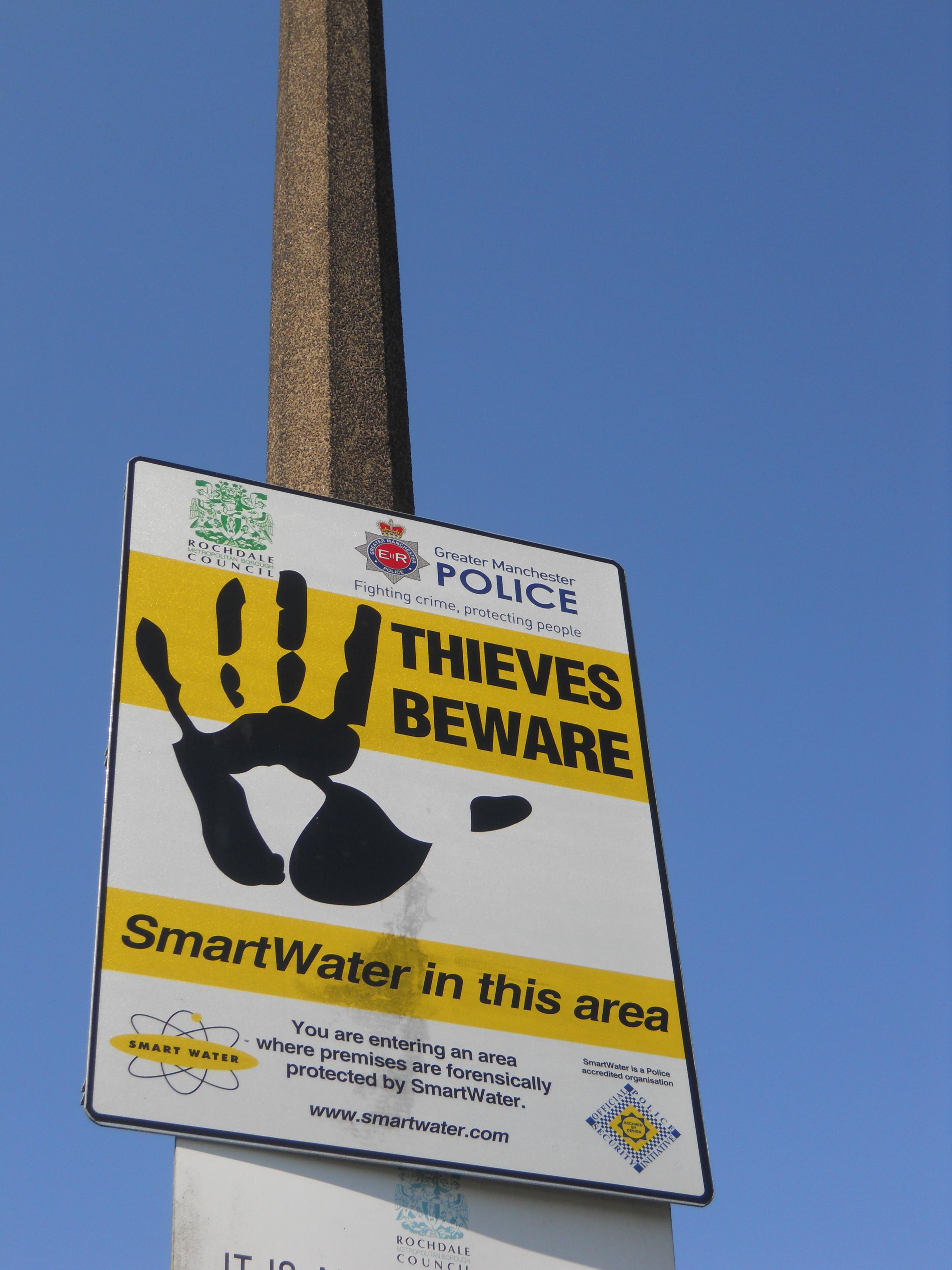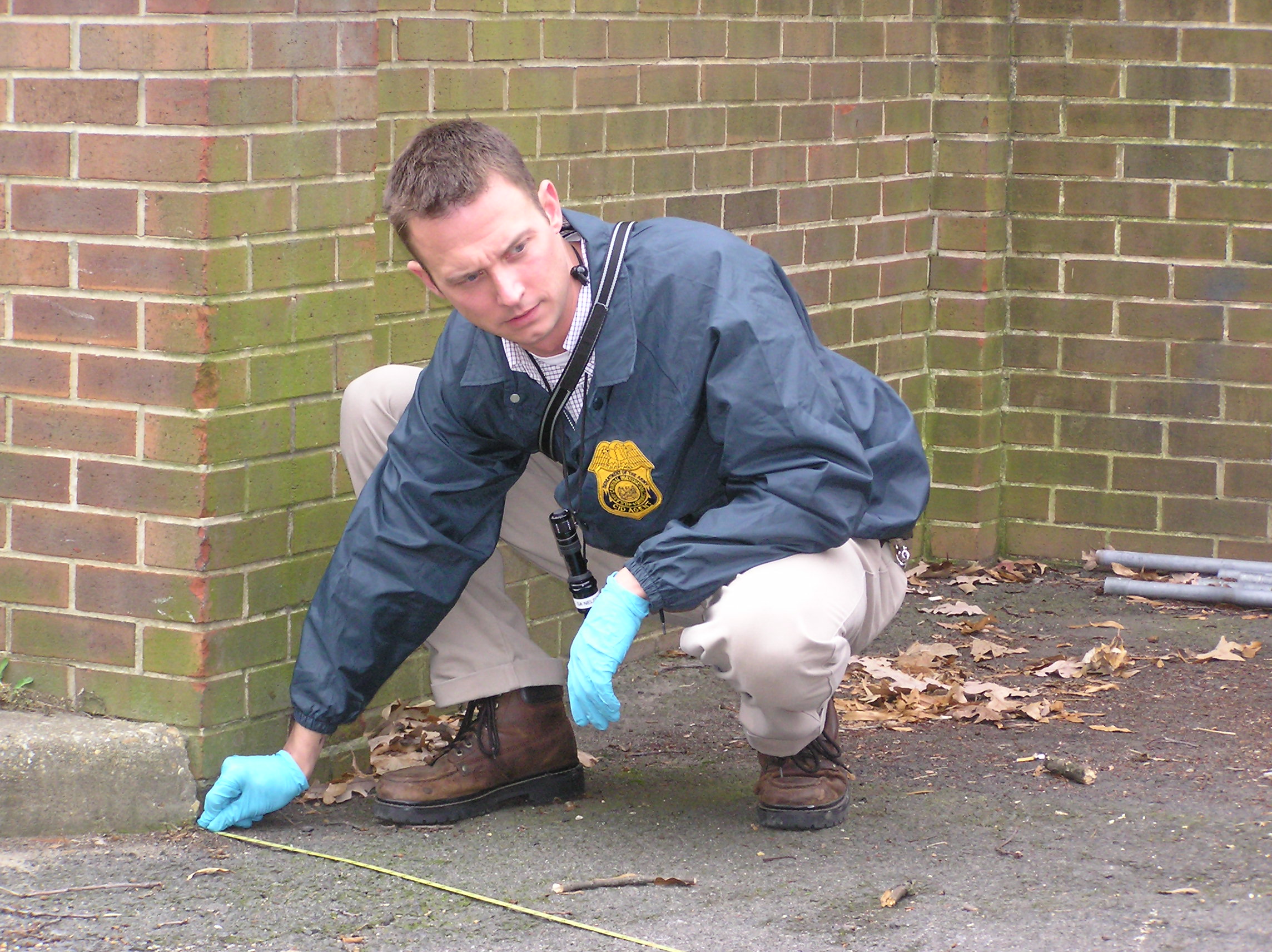|
SmartWater
SmartWater is a traceable liquid and forensic asset marking system ( taggant), applied to items of value to identify thieves, and deter theft. The liquid leaves a unique identifier, whose presence "cannot be easily seen by the naked eye" except under ultraviolet black light. History SmartWater, the forensic technology company, was started in the early 1990s by Phil Cleary. Phil's brother, Mike Cleary, a Chartered Chemist and a Fellow of the Royal Society of Chemistry, created SmartWater, and was responsible for technology development, whereas Phil Cleary looked after the business side of things. In 1996, SmartWater gained a national profile when the Clearys won the Prince of Wales Award for the product with the most commercial potential on BBC's Tomorrow's World. From 2016 to 2019, SmartWater initiated an M&A program, which culminated in the acquisition of PID Systems Ltd in Prestwick, Scotland. This led to the formation of the SmartWater Group Limited, comprising SmartWater ... [...More Info...] [...Related Items...] OR: [Wikipedia] [Google] [Baidu] |
SmartWater Sign - Thieves Beware - On A Pole
SmartWater is a Traceability, traceable liquid and Forensic identification, forensic asset marking system (taggant), applied to items of value to identify thieves, and deter theft. The liquid leaves a unique identifier, whose presence "cannot be easily seen by the naked eye" except under ultraviolet black light. History SmartWater, the forensic technology company, was started in the early 1990s by Phil Cleary. Phil's brother, Mike Cleary, a Chartered Chemist and a Fellow of the Royal Society of Chemistry, created SmartWater, and was responsible for technology development, whereas Phil Cleary looked after the business side of things. In 1996, SmartWater gained a national profile when the Clearys won the Prince of Wales Award for the product with the most commercial potential on BBC's Tomorrow's World. From 2016 to 2019, SmartWater initiated an M&A program, which culminated in the acquisition of PID Systems Ltd in Prestwick, Scotland. This led to the formation of the SmartWater ... [...More Info...] [...Related Items...] OR: [Wikipedia] [Google] [Baidu] |
Traceability
Traceability is the capability to trace something. In some cases, it is interpreted as the ability to verify the history, location, or application of an item by means of documented recorded identification. Other common definitions include the capability (and implementation) of keeping track of a given set or type of information to a given degree, or the ability to chronologically interrelate uniquely identifiable entities in a way that is verifiable. Traceability is applicable to measurement, supply chain, software development, healthcare and security. Measurement The term ''measurement traceability'' or ''metrological traceability'' is used to refer to an unbroken chain of comparisons relating an instrument's measurements to a known standard. Calibration to a traceable standard can be used to determine an instrument's bias, precision, and accuracy. It may also be used to show a chain of custody—from current interpretation of evidence to the actual evidence in a legal cont ... [...More Info...] [...Related Items...] OR: [Wikipedia] [Google] [Baidu] |
SelectaDNA
SelectaDNA is a forensic property marking system used as part of crime prevention strategies for businesses and residential properties. Mechanism The SelectaDNA is a range of property and offender marking products combining synthetic DNA coding with microdot technology. Each SelectaDNA kit has sufficient fluid to mark up to 50-60 items or parts of an item such as a car. Both the fluid and the microdots carry a unique code which the owner has to register in a database to which the police has access. In case of theft and the police recovering the item, it can be traced back to its owner. A code found on an asset or person can be deciphered by a molecular genetic laboratory and identified back to a specific owner or location. The fluid is almost invisible, does no damage to the property and only becomes visible in ultraviolet light. Also, dogs can be trained to sniff SelectaDNA marked items, as demonstrated by an initiative run by Wiltshire Police in cooperation with Search Dog ... [...More Info...] [...Related Items...] OR: [Wikipedia] [Google] [Baidu] |
Security Technology
Security is protection from, or resilience against, potential harm (or other unwanted coercion). Beneficiaries (technically referents) of security may be persons and social groups, objects and institutions, ecosystems, or any other entity or phenomenon vulnerable to unwanted change. Security mostly refers to protection from hostile forces, but it has a wide range of other senses: for example, as the absence of harm (e.g., freedom from want); as the presence of an essential good (e.g., food security); as resilience against potential damage or harm (e.g. secure foundations); as secrecy (e.g., a secure telephone line); as containment (e.g., a secure room or cell); and as a state of mind (e.g., emotional security). Security is both a feeling and a state of reality. One might feel secure when one is not actually so; or might feel insecure despite being safe. This distinction is usually not very clear to express in the English language. The term is also used to refer to acts and ... [...More Info...] [...Related Items...] OR: [Wikipedia] [Google] [Baidu] |
Forensic Equipment
Forensic science combines principles of law and science to investigate criminal activity. Through crime scene investigations and laboratory analysis, forensic scientists are able to link suspects to evidence. An example is determining the time and cause of death through autopsies. This evidence can then be used for proof towards a crime. Forensic science, often confused with criminalistics, is the application of science principles and methods to support legal decision-making in matters of criminal and civil law. During criminal investigation in particular, it is governed by the legal standards of admissible evidence and criminal procedure. It is a broad field utilizing numerous practices such as the analysis of DNA, fingerprints, bloodstain patterns, firearms, ballistics, toxicology, microscopy, and fire debris analysis. Forensic scientists collect, preserve, and analyze evidence during the course of an investigation. While some forensic scientists travel to the scene of the ... [...More Info...] [...Related Items...] OR: [Wikipedia] [Google] [Baidu] |
Law Enforcement Equipment
Law is a set of rules that are created and are enforceable by social or governmental institutions to regulate behavior, with its precise definition a matter of longstanding debate. It has been variously described as a science and as the art of justice. State-enforced laws can be made by a legislature, resulting in statutes; by the executive through decrees and regulations; or by judges' decisions, which form precedent in common law jurisdictions. An autocrat may exercise those functions within their realm. The creation of laws themselves may be influenced by a constitution, written or tacit, and the rights encoded therein. The law shapes politics, economics, history and society in various ways and also serves as a mediator of relations between people. Legal systems vary between jurisdictions, with their differences analysed in comparative law. In civil law jurisdictions, a legislature or other central body codifies and consolidates the law. In common law systems, judges m ... [...More Info...] [...Related Items...] OR: [Wikipedia] [Google] [Baidu] |
Criminal Investigation
Criminal investigation is an applied science that involves the study of facts that are then used to inform criminal trials. A complete criminal investigation can include Search and seizure, searching, interviews, interrogations, Evidence (law), evidence collection and preservation, and various methods of investigation. Modern-day criminal investigations commonly employ many modern scientific techniques known collectively as forensic science. Criminal investigation is an ancient science that may have roots as far back as in the writings of the Code of Hammurabi. In the code, it is suggested that both the accuser and the accused had the right to present evidence they collected. In the modern era, criminals investigations are most often done by government Police, police forces. Private investigators are also commonly hired to complete or assist in criminal investigations. An early recorded professional criminal investigator was the English constable. Around 1250 CE, it was recorde ... [...More Info...] [...Related Items...] OR: [Wikipedia] [Google] [Baidu] |
Security Engineering
Security engineering is the process of incorporating security controls into an information system so that the controls become an integral part of the system's operational capabilities. It is similar to other systems engineering activities in that its primary motivation is to support the delivery of engineering solutions that satisfy pre-defined functional and user requirements, but it has the added dimension of preventing misuse and malicious behavior. Those constraints and restrictions are often asserted as a security policy. In one form or another, security engineering has existed as an informal field of study for several centuries. For example, the fields of locksmithing and security printing have been around for many years. The concerns for modern security engineering and computer systems were first solidified in a RAND paper from 1967, "Security and Privacy in Computer Systems" by Willis H. Ware. This paper, later expanded in 1979, provided many of the fundamental information ... [...More Info...] [...Related Items...] OR: [Wikipedia] [Google] [Baidu] |
Perfluorocarbon Tracer
Perfluorocarbon tracers (PFTs) are a range of perfluorocarbons used in flow tracers and other tracing applications. They are used by releasing the PFT at a certain point, and determining the concentration of that PFT at another set of points, allowing the flow from the source to the points to be determined. Properties PFTs are believed to be non-toxic and chemically inert, clear, colourless liquids. They are non-flammable and nonradioactive compounds that do not occur in nature at all, so background levels are very low, but they can be detected at extremely low concentrations. There is a range of PFTs available commercially, allowing the experimenter to release different PFTs at the same time. Cyclic perfluorocarbons, such as perfluoromethylhexane and perfluoro-1,3-dimethylcyclohexane, are generally believed to be better than acyclic ones as they can be detected at lower levels. Procedure The PFT can be released in a variety of ways, depending on the application, and may be ... [...More Info...] [...Related Items...] OR: [Wikipedia] [Google] [Baidu] |
Invisible Ink
Invisible ink, also known as security ink or sympathetic ink, is a substance used for writing, which is invisible either on application or soon thereafter, and can later be made visible by some means, such as heat or ultraviolet light. Invisible ink is one form of steganography. History One of the earliest writers to mention an invisible ink is Aeneas Tacticus, in the 4th century BC. He mentions it in discussing how to survive under siege but does not indicate the type of ink to be used. This was part of his list of the 20 different methods of secret communications in a book called ''On the Defense of Fortifications''. One of the techniques that involved steganography involved puncturing a tiny hole above or below letters in a document to spell out a secret message. This did not include an invisible ink but the Germans improved on the method during World War I and World War II. They used invisible ink and microdots instead of pinpricks. Philo of Byzantium may be the first write ... [...More Info...] [...Related Items...] OR: [Wikipedia] [Google] [Baidu] |
DNA Marking
DNA marking is a type of forensic identification. It is a method to mark items in a way that is undetectable to the naked eye. A unique DNA marker is applied to the item, and can be recovered to identify the item. In suspected thefts, the suspect can also be tested for traces of the DNA marking. DNA marking can be used to prevent thefts of objects that are hard to mark in any other way (e.g. copper cables). It can also be used to help separate between genuine and counterfeit A counterfeit is a fake or unauthorized replica of a genuine product, such as money, documents, designer items, or other valuable goods. Counterfeiting generally involves creating an imitation of a genuine item that closely resembles the original ... electronics and other replacement parts.{{cite web , url=http://www.washingtonexaminer.com/plant-dna-markers-help-the-pentagon-detect-counterfeit-electronics-in-the-military-supply-chain/article/2536616 , title=Plant DNA markers help the Pentagon detect counterfe ... [...More Info...] [...Related Items...] OR: [Wikipedia] [Google] [Baidu] |
Alphadot
A microdot is text or an image substantially reduced in size to prevent detection by unintended recipients. Microdots are normally circular and around in diameter but can be made into different shapes and sizes and made from various materials such as polyester or metal. The name comes from microdots often having been about the size and shape of a typographical dot, such as a period or the tittle of a lowercase ''i'' or ''j''. Microdots are, fundamentally, a steganographic approach to message protection. History In 1870 during the Franco-Prussian War, Paris was under siege and messages were sent by carrier pigeon. Parisian photographer René Dagron used microfilm to permit each pigeon to carry a high volume of messages, as pigeons can carry little weight. Improvement in technology since then has made even smaller miniaturization possible. At the 1925 International Congress of Photography in Paris, Emanuel Goldberg presented a method of producing extreme reduction microdot ... [...More Info...] [...Related Items...] OR: [Wikipedia] [Google] [Baidu] |







